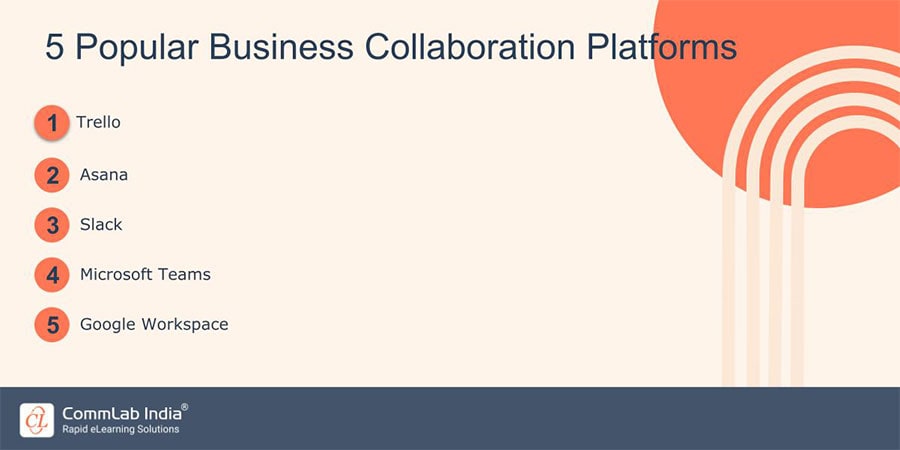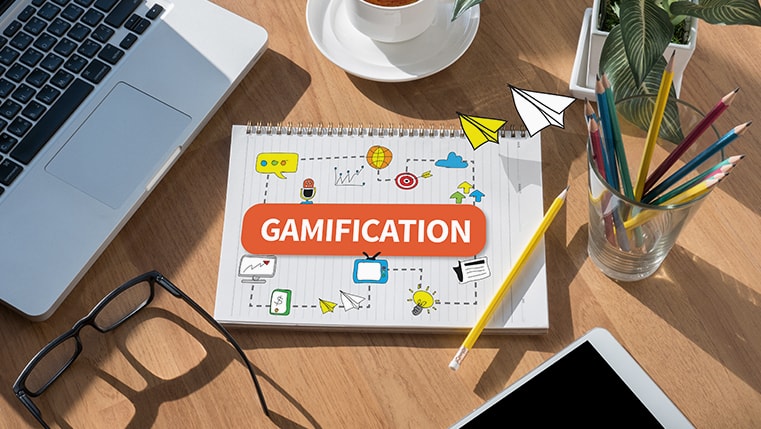Achievement Unlocked: Exploring the Power of Gamification for eLearning Assessments

In the ever-evolving landscape of training, eLearning assessments play a pivotal role in gauging an employee’s understanding and progress. As technology continues to shape the way we learn, the integration of gamification into these assessments has emerged as a powerful and engaging tool. This blog explores the myriad benefits of incorporating gamification into eLearning assessments, delving into its impact on motivation, learning retention, personalized learning paths, immediate feedback, social learning, collaboration, and effective implementation strategies.
Trying Different Ways to Make eLearning Assessments Interesting? Try Gamification!
Here are a few of its benefits to get started -
- Motivation and engagement
- Enhancing knowledge retention
- Personalized learning paths
- Immediate feedback and iterations
- Social learning and collaboration
Understanding Gamification in eLearning
Gamification, in the context of eLearning, is a strategic approach that leverages game elements and mechanics to enhance the learning experience. It involves the incorporation of elements such as points, badges, leaderboards, challenges, and narratives into training content, transforming conventional assessments into interactive and engaging experiences. The goal is to motivate learners, increase participation, and promote a sense of achievement, ultimately making the learning process more enjoyable and effective.
Gamification is not about turning training into a game but rather about borrowing elements from games to enhance learning content. These game-like features serve as incentives, encouraging learners to actively participate, stay focused, and persevere through challenges.
→ Download Case Study: Gamified eLearning with Scenarios for Information Security
Difference Between Gamification and Game-Based Learning
It's essential to clarify the distinction between gamification and game-based learning. While both concepts involve the use of game elements in a training context, they differ in their approach.

How Gamification Elements can be Integrated into eLearning Assessments
To effectively integrate gamification into eLearning assessments, trainers can adopt various game elements strategically. Here's an overview of how these elements can be seamlessly incorporated:
- Points and Rewards: Assigning points for correct answers or completed tasks provides a tangible measure of progress. Accumulating points can lead to rewards or unlock new levels, creating a sense of accomplishment. This works best with microlearning modules as you can create a sense of competition and save time as well.
- Badges and Achievements: Recognizing and rewarding achievements through virtual badges or certificates reinforces positive behavior and motivates learners to excel. Badges can signify mastery of specific skills or completion of challenging tasks.
- Leaderboards: Introducing friendly competition through leaderboards fosters a sense of community and encourages learners to strive for the top position. This social element adds an extra layer of motivation.
- Challenges and Quests: Structuring assessments as challenges or quests make the learning journey more dynamic. Learners embark on a quest to complete tasks, solve problems, or achieve specific objectives, making the assessment feel like an adventure.
- Narratives and Storytelling: Weaving a narrative into assessments adds context and meaning to the learning experience. A compelling story can immerse learners in the content, making it more memorable and engaging.
- Progress Tracking: Visualizing progress, either through a progress bar or interactive map, gives learners a clear overview of their journey. This transparency helps them understand their advancement and encourages them to continue.
Why Gamification Elements Should be Integrated into eLearning Assessments
1. Motivation and Engagement
One of the primary challenges in eLearning is maintaining learner motivation. Gamification addresses this issue head-on by tapping into the innate human desire for achievement and recognition. By incorporating game mechanics, such as earning points or badges, eLearning assessments become more than just tests-they transform into engaging challenges that capture learners' interest. The competitive edge introduced by leaderboards further fuels motivation, fostering a sense of accomplishment and encouraging learners to strive for improvement.
2. Enhancing Knowledge Retention
The ability to retain information is a key indicator of effective learning. Gamified assessments have demonstrated a positive impact on knowledge retention compared to traditional methods. Cognitive benefits arise from the interactive and immersive nature of gamification, making the learning experience more memorable. As learners navigate through scenarios, make decisions, and receive instant feedback, they actively participate in their own learning journey, reinforcing key concepts and enhancing long-term retention.
3. Personalized Learning Paths
Every learner is unique, and a one-size-fits-all approach often falls short in addressing individual needs. Gamification allows for the creation of personalized learning paths based on each learner's progress and performance. Adaptive learning, facilitated by gamified elements, tailors assessments to the individual, ensuring that challenges are neither too easy nor too difficult. This personalized approach not only optimizes the learning experience but also caters to diverse learning styles, accommodating a broader range of learners.
4. Immediate Feedback and Iterative Learning
Timely feedback is essential for effective learning, and gamification excels in delivering immediate responses. Whether it's a correct answer celebrated with virtual rewards or constructive feedback following a mistake, learners receive instant insights into their performance. This immediate feedback loop promotes iterative learning, encouraging employees to understand their mistakes, make corrections, and consolidate their knowledge. The continuous cycle of assessment, feedback, and improvement accelerates the learning process and contributes to a deeper understanding of the subject matter.
5. Social Learning and Collaboration
Training is not solely an individual endeavor; it thrives on collaboration and shared experiences. Gamification introduces social elements into eLearning assessments, fostering a sense of community among learners. Multiplayer scenarios, team-based challenges, and collaborative activities create an environment where learners can learn from and with each other. The social dynamics inherent in gamification not only enhance the training experience but also mirror real-world collaborative scenarios, preparing the employees for future teamwork and communication challenges. Here are a few collaboration platforms that are popular today.

6. Addressing Criticisms and Concerns
While the benefits of gamification in eLearning assessments are evident, it's essential to address potential criticisms and concerns. Some may argue that gamification could distract from training objectives or prioritize entertainment over learning. However, effective implementation and careful design can mitigate these concerns. Striking a balance between engaging elements and learning content ensures that gamification serves as a complementary tool rather than a distraction.
7. Implementation Strategies
Implementing gamification in eLearning assessments requires careful planning and consideration. Trainers can follow practical strategies to seamlessly integrate gamified elements into their courses. Utilizing gamification platforms, incorporating storytelling elements, and aligning game mechanics with learning objectives are key strategies. Additionally, monitoring and analyzing learner data can provide valuable insights, allowing trainers to fine-tune and optimize gamified assessments for maximum impact.
Wrapping Up!
In conclusion, the integration of gamification into eLearning assessments revolutionizes the training landscape. By tapping into the innate human desire for achievement, gamification enhances motivation, fosters engagement, and promotes effective learning. Implementation strategies provide a roadmap for trainers looking to harness the power of gamification to create enriching and impactful eLearning experiences. Check out how we gamified the eLearning with scenarios for information security.





